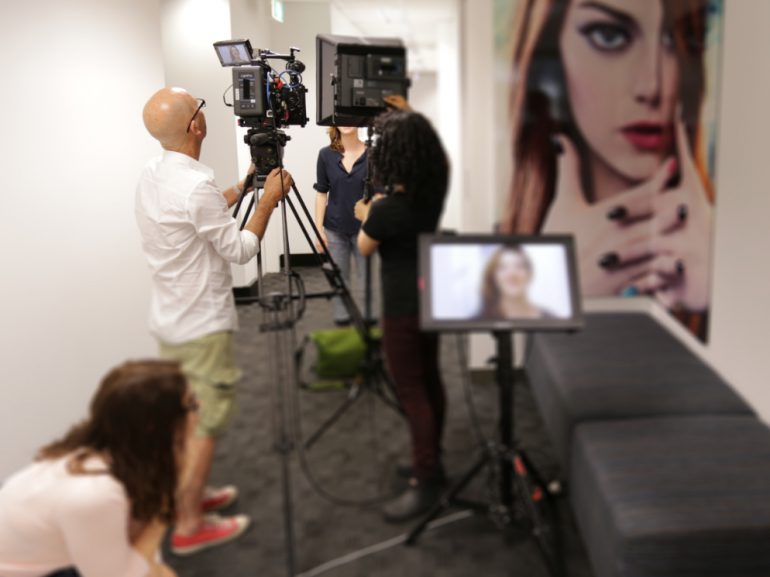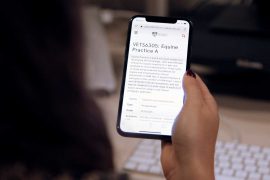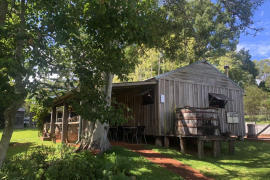Group work can be a polarising feature of teaching and learning. Done well, it provides a unique and multidimensional learning experience which goes beyond content knowledge to also encompass skills and processes which are widely transferable. Collaborative learning, whether for engagement with course content or for assessment, is a process which can be enhanced by good learning design. The ideas for group work featured in this everyday innovation selection demonstrate thoughtful, student-centred design, and also recognise the importance of fun and enjoyment in fostering helpful peer connections and engagement with learning.
Lisa Hampshire and Sarah Scealy: Dangerous games – playful team learning on the microbiology of infectious diseases
Lisa Hampshire (she/her) leads Educational Design for the Rural Stream of the Sydney Medical School, with a brief covering a vast swathe of Wiradjuri Country with Schools in Orange and Dubbo. Lisa enjoyed a career at the ABC and in Media Teaching before switching to medical education. Her Masters in Education includes a sub-specialty in digital innovation.
Dr Sarah Scealy is a biologist with a research background in Comparative Physiology (MSc), Evolutionary Developmental Biology (PhD) and Translational Medicine (TRI-UQDI). She has also been teaching Basic Sciences since 2010. In Australia, she worked as a teaching-focused academic at Charles Sturt University (2017-2023) and was recruited as a Pre-Clinical Sciences Lecturer by SRH (Dubbo) in 2023, where she teaches Year 1 MD students.
“Seeking a practical way to help first year medical students learn the large amount of content in critically important Microbiology subject material, we collaborated with our colleagues in the Camperdown Microbiology/Infectiology discipline teaching team to adapt an existing game called “What’s your Diagnosis?” to create a Cluedo-style game to help students learn and revise the information. The new game features fifty bacteria, viruses, yeasts, fungi, mould and parasites with two information booklets covering 500 separate elements of information. The Microbial Guide booklets operate as open-book exams, with players racing the clock and the opposing team as they develop a thesis about their ‘diagnosis’. To play the game each team selects a pathogen and keeps its identity secret, while the opposing team/s then question each other using characteristics of the infective element to identify or diagnose the pathogen. The game is flexible and can be played by teams of students while also functioning effectively as a one-on-one or individual study tool.
The game offers a fun and meaningful challenge, aligned with subject learning outcomes and contextualising core concepts. Games assist with a critical aspect of medical teaching and learning; helping learners to make memories rather than strictly assisting them to memorise content. We refined the game in response to feedback from students after the first session, and gave them their own copy of the game to use for revision.”
Find out more about Lisa and Sarah’s version of ‘What’s your Diagnosis?’.
Dominic Hearne: Trusting the process – students as teachers for active learning
Dominic Hearne is the current senior tutor for FASS1000 Studying Arts and Social Sciences, and principal tutor for EDMT6630/EDSE4044 Information Technology and Schools. He has taught in secondary schools for 35 years.
“One of my units has a particularly theory-heavy component which students find challenging. Seeking a way to incorporate an active learning approach to help my students to learn more effectively, I designed a collaborative teaching activity. Dividing the content into seven sections, I invited the class to form seven groups, each of which was tasked with developing a class presentation aimed at explaining ‘their’ section. Taking inspiration from the PechaKucha format I asked the students to give an informal three minute presentation accompanied by three slides and groups had 40 minutes in class to prepare their work before presenting. To support the class to engage in this activity it was important for me to give them clear instructions, and even more important for me to express my confidence in them and their abilities to dive in, collaborate, and ultimately share their knowledge with the class.
Having this as an in-class activity, in a compressed timeframe, resulted in students rapidly focussing on, and exploring, the content – with a lot of energy and enjoyment! The presentation format also necessitated students using digital technology to create slides which delivered the essence of the content in a concise way without a reliance on lengthy text. Through the combined efforts of the groups, the class shared their insights and learned with and from each other, and their slides became a co-created resource for everyone. They also had an experience of productive collaboration, and active and interpersonal learning, a process they can go on to use in a wide variety of contexts.”
Dr Jessica Zanuttini: Swift selection – speed interviewing for group assignment allocation
Dr Jessica Zanuttini is a lecturer in special and inclusive education at the University of Sydney. Her teaching and research interests include social communication, peer mediation, and collaboration. Drawing from a decade-long journey in primary, secondary, and tertiary education, Jessica is passionate about creating inclusive and interactive learning environments.
“It began as a playful endeavour, exploring a different way of allocating students for their group assignments that didn’t rely on self-assignment or tutor allocation. Drawing inspiration from the research of Sublett et al. (2022), I prepared to experiment with a speed-interviewing strategy, suggestive of speed-dating protocols. I encouraged students to prepare for the speed-interviewing exercise in the week beforehand by reviewing the group-assignment requirements and drafting a brief proposal outlining their approach to the task, highlighting their interests and strengths. During the speed-interviews, I distributed preference forms and facilitated the logistical flow as students rotated between 2-minute interviews with their peers. Each student engaged in one-on-one conversations with every classmate, jotting down brief notes regarding their preferences. After the exercise concluded, I gathered the preference forms and formed student groups according to their indicated preferences.
Speed interviewing proved to be an effective method for grouping students based on shared interests, aligned expectations, and preferred collaboration and communication styles. As an ongoing practice in my classroom this strategy fosters interaction among students who may not have otherwise connected, offering a platform to amplify student voices. While effective on its own, I have integrated this strategy with the prerequisite of developing team charters before commencing group work, along with the submission of collaborative statements upon completion. Group assignments, while often a source of contention among students, have evolved into a vital aspect of our semester-long camaraderie through this approach.”
About everyday innovation
Everyday innovation is about small, clever, creative and caring things that teachers at Sydney are doing in their classes. The scale of focus of this series is the quotidian, the extraordinary ordinary, the things we can do at arm’s reach, are comfortably within our resources, and are experimental – the stuff we try out together with our students in the lively spaces of our classes. Small ideas, while often overlooked on the big stage of awards and such, are special because they’re sensitive to their specific contexts. They’re often the simplest to implement and can allow nimble adaptations on the fly. These ideas deserve recognition and celebration! Let us know about your, or a colleague’s, everyday innovation by emailing us at [email protected].
Read other articles in the everyday innovation series for inspiration in your own teaching.





